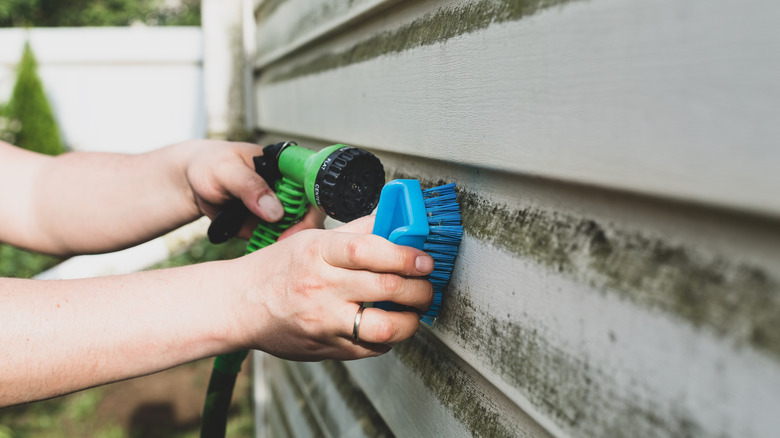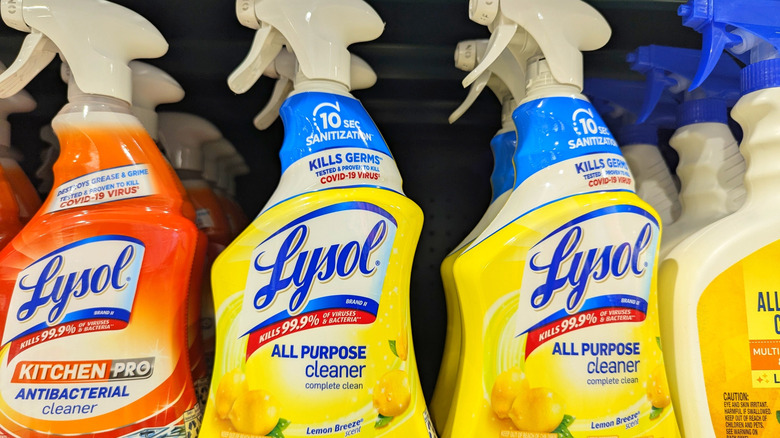Tackle Tough Stains On Vinyl Siding With A Favorite Household Cleaner
Using vinyl siding for your home's exterior isn't just a stylish choice, it's a smart choice. Why? Because it's easy to clean and maintain. Muck and stains will inevitably appear on your siding eventually, caused by everyday sources like dirt, algae, mildew, and rust, but they don't have to be hard to clean. And while you could bring in siding cleaning professionals, the cost of doing so will add up fast when you factor in labor, supplies, and the size of your house. But you can save a few bucks and tackle tough stains with a popular household cleaner you likely already own: Lysol.
The common crud you'll find on vinyl siding includes dirt, algae, soot, mildew, rust, pollen, mold, and pollutants. Other contributors include wind, doing yard work, and being close to busy roads, as each has its own way of flinging around debris and gunk that can end up on your house. And of course, this detritus can escalate into a nasty stain if it's left long enough to set in.
While some things are easy enough to rinse off, especially if they haven't been there long, attempting to remove tough stains is another beast altogether. Set-in stains most often come from moisture issues (think water runoff or damp environments), from dirt or smoke (this will be soot from fireplaces, or living next to a busy road), or from rust (often from metal nails or fixtures on the exterior of your house). These will need a tougher approach than a quick rinse from the hose, which is where spraying Lysol comes in.
Why Lysol works well on vinyl siding
Lysol is designed to clean, disinfect, and get rid of stains caused by everyday items — like grease or rust. In addition to the top tools for cleaning vinyl siding, it makes sense that Lysol's usefulness would translate over to cleaning this part of your home. It's made with antibacterial cleaning agents and disinfectants that target grime, mildew, and mold, which are some of the most common culprits found on vinyl siding. It also has surfactants that reach deep to grab dirt, separate it from water, and remove it from the source.
When sprayed on vinyl siding, Lysol attacks anything that's organic, which in this case would be any mildew, algae, or mold buildup. Additionally, its solvents work to dissolve problematic non-organic gunk, too, like grease. And some Lysol products (like its All Purpose Cleaner) are even mildly acidic, which may help it get rid of some rust and make your vinyl siding look new again.
Do note that, while the capabilities of Lysol line up with many of the issues you want to resolve with your vinyl siding, cleaning siding is not the primary use for Lysol. We recommend testing it out first on a small, less noticeable area of your home's siding to ensure it works and rinses off okay without causing any issues. You may also want to leave any extra-tough stains or concerning areas to the pros. As for how often you need to clean your exterior siding, 12 to 18 months is ideal.

